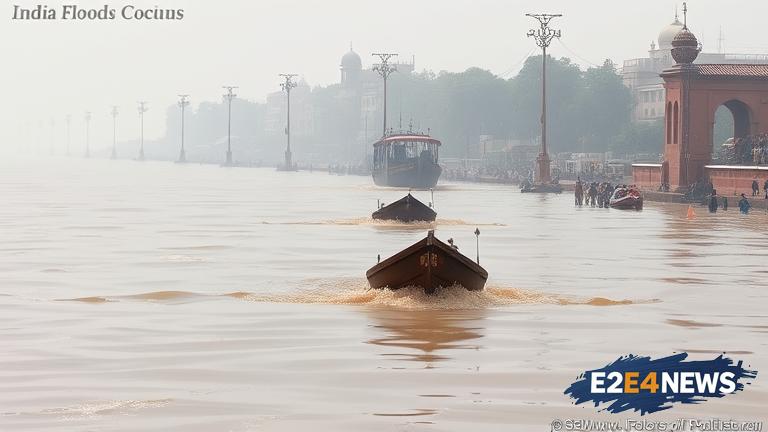The state of Uttar Pradesh is facing a severe flood crisis, with 17 districts reeling under the fury of overflowing rivers. The Ganga River, considered sacred by millions, has crossed the danger mark in Varanasi and Prayagraj, causing widespread devastation. The floodwaters have submerged homes, roads, and agricultural fields, leaving thousands of people displaced and struggling to access basic necessities. The situation is particularly dire in Varanasi, where the river has risen to alarming levels, threatening to engulf the city’s iconic ghats and temples. In Prayagraj, the floodwaters have inundated several low-lying areas, forcing residents to flee their homes and seek shelter on higher ground. The district administrations in both cities have set up relief camps and are distributing food, water, and other essential supplies to the affected populations. However, the scale of the disaster is so vast that many people remain without access to basic amenities, and the risk of waterborne diseases is growing by the day. The Indian government has dispatched teams of National Disaster Response Force (NDRF) personnel to assist with rescue and relief efforts, but the challenges are formidable. The floods have also disrupted transportation networks, with several major roads and highways remaining closed due to waterlogging. The state government has announced plans to provide financial assistance to affected families, but the process of distributing aid is likely to be slow and cumbersome. As the situation continues to deteriorate, there are growing concerns about the long-term impact of the floods on the region’s economy and infrastructure. The floods have already caused significant damage to crops, livestock, and property, and the rebuilding process is likely to take months, if not years. The Indian Meteorological Department has forecast more rainfall in the coming days, which could exacerbate the situation and lead to further flooding. The people of Uttar Pradesh are bracing themselves for the worst, even as they struggle to cope with the aftermath of the disaster. The floods have also highlighted the need for more effective flood management systems and infrastructure in the region, which has been plagued by recurring flood disasters over the years. The state government has promised to take steps to address these issues, but the task will be daunting. In the meantime, the people of Uttar Pradesh can only hope that the waters recede soon, and they can begin the long process of rebuilding and recovery. The international community is also watching the situation with concern, and offers of aid and assistance are pouring in from around the world. The Indian government has welcomed these offers, and is working to coordinate a response that will bring relief to the affected populations as quickly as possible. As the situation continues to unfold, one thing is clear: the flood crisis in Uttar Pradesh is a disaster of epic proportions, and it will take a concerted effort from all stakeholders to mitigate its impact and rebuild the affected communities. The road to recovery will be long and arduous, but with the right support and assistance, the people of Uttar Pradesh can overcome this tragedy and emerge stronger and more resilient than ever. The floods have also brought attention to the issue of climate change, which is exacerbating the frequency and severity of extreme weather events like floods. The Indian government has acknowledged the need to address climate change, and has announced plans to reduce the country’s carbon footprint and transition to renewable energy sources. However, the task will be challenging, and will require sustained efforts from all stakeholders. In the meantime, the people of Uttar Pradesh can only hope that the floods will recede soon, and they can begin the process of rebuilding and recovery.





